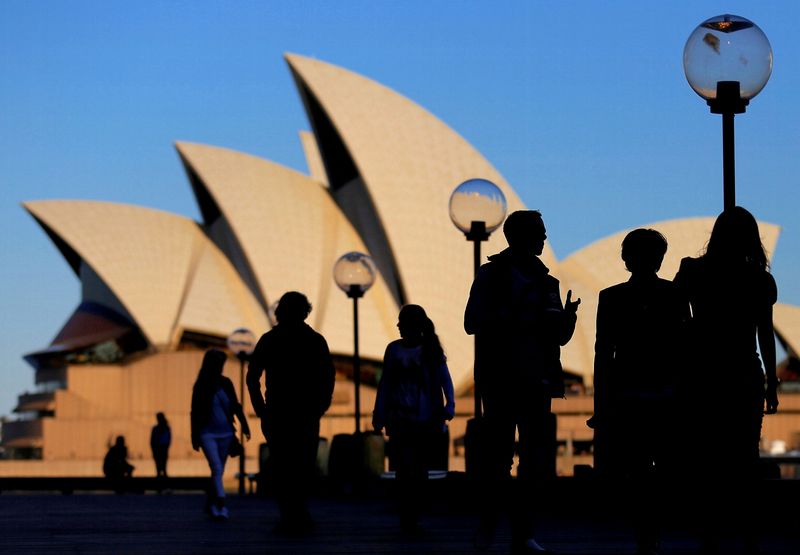By Stella Qiu and Wayne Cole
SYDNEY (Reuters) - Australian employment rebounded sharply in February, while the jobless rate dived far below forecasts in an emphatic sign the labour market was still tight and that recent weakness had been statistically overstated.
The Australian dollar rose 0.5% to $0.6622 and three-year bond futures reversed earlier gains to be off 4 ticks to 96.35. Markets trimmed the expected interest rate easing for the year from the Reserve Bank of Australia to 37 basis points from 44 bps before.
Figures from the Australian Bureau of Statistics on Thursday showed net employment jumped 116,500 in February from January when it rose a revised 15,200. Barring distortions caused by the pandemic, it was the biggest monthly gain in 10 years.
Market forecasts had centred on a bounce of 40,000 as analysts suspected prior weakness was largely a statistical quirk.
The jobless rate dropped to 3.7%, back to the level from six months ago and down from a two-year high of 4.1%.
The ABS noted a larger-than-usual number of people started working in February after the summer holiday, a change in the seasonal pattern that contributed to the recent volatile results.
"These numbers have been bouncing around a lot...so I think the RBA would probably be inclined to look through this and wait for the dust to settle and therefore want to look at a few months worth of data before concluding anything," said Shane Oliver, chief economist at AMP (OTC:AMLTF).
The surprisingly weak January figures had raised fears that the labour market could be loosening faster than expected, one reason the RBA left its cash rate unchanged on Tuesday for the third straight meeting and softened the stance by dropping the tightening bias.
However, RBA Governor Michele Bullock still judged the labour market was on the tight side and said the central bank had not rule anything in or out on policy.
"There are signs the employment market as a whole, rather than just focusing on the unemployment rate, is coming back into better balance, but maybe it's not quite there yet," said Bullock at her post-meeting press conference this week.
Full-time employment rose 78,200 in February. The participation rate edged up to 66.7% while hours worked bounced a strong 2.8%, after falling 2.5% the previous month.
However, the labour market is expected to loosen in the months ahead and the RBA projects the jobless rate will tick up to 4.2% by June and 4.3% by the end of the year.

"Very strong Australian employment suggests the Reserve Bank was right to leave its rate options open," said analysts at ING.
"They will be glad they did not go further and move to an easing bias."